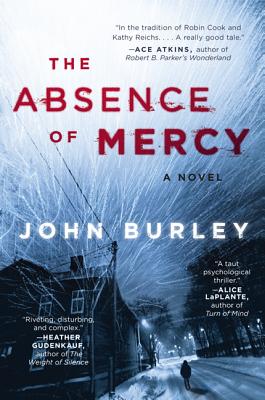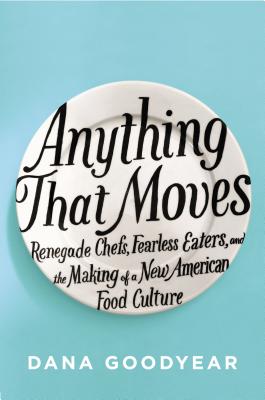A doctor in small-town Ohio must weigh the need to catch a killer against his fears for his family's safety in this extraordinary debut suspense novel
Just west of the Ohio River lies the peaceful town of Wintersville. It's a place where neighbors feel like family, the chief of police knows the residents by name, and the sound of children's laughter echoes along the streets.
But when a teenager is discovered brutally murdered in the woods, Dr. Ben Stevenson—the town's medical examiner—becomes entangled in an investigation that will force him to uncover the dark secrets of his seemingly quiet community and ultimately to confront a truth that will haunt him forever.
With its nerve-fraying plot twists and eerie portrait of suburban life, The Absence of Mercy is psychological suspense at its best—a remarkable debut that challenges as much as it thrills.
In the tradition of Wide Sargoso Sea, Havisham the astonishing prelude to Charles Dickens's Great Expectations.
Before she became the immortal and haunting Miss Havisham of Great Expectations, she was Catherine, a young woman with all of her dreams ahead of her. Spry, imperious, she is the daughter of a wealthy brewer. But she is never far from the smell of hops and the arresting letters on the brewhouse wall—Havisham—a reminder of all she owes to the family name and the family business.
Sent by her father to stay with the Chadwycks, Catherine discovers elegant pastimes to remove the taint of her family's new money. But for all her growing sophistication, Catherine is anything but worldly, and when a charismatic stranger pays her attention, everything—her heart, her future, the very Havisham name—is vulnerable.In Havisham, Ronald Frame unfurls the psychological trauma that made young Catherine into Miss Havisham and cursed her to a life alone, roaming the halls of the mansion in the tatters of the dress she wore for the wedding she was never to have.
Paul Auster’s most intimate autobiographical work to date
Having recalled his life through the story of his physical self in Winter Journal, internationally acclaimed novelist Paul Auster now remembers the experience of his development from within through the encounters of his interior self with the outer world in Report from the Interior.
From his baby’s-eye view of the man in the moon, to his childhood worship of the movie cowboy Buster Crabbe, to the composition of his first poem at the age of nine, to his dawning awareness of the injustices of American life, Report from the Interior charts Auster’s moral, political, and intellectual journey as he inches his way toward adulthood through the postwar 1950s and into the turbulent 1960s.
Auster evokes the sounds, smells, and tactile sensations that marked his early life—and the many images that came at him, including moving images (he adored cartoons, he was in love with films), until, at its unique climax, the book breaks away from prose into pure imagery: The final section of Report from the Interior recapitulates the first three parts, told in an album of pictures. At once a story of the times—which makes it everyone’s story—and the story of the emerging consciousness of a renowned literary artist, this four-part work answers the challenge of autobiography in ways rarely, if ever, seen before.
Just west of the Ohio River lies the peaceful town of Wintersville. It's a place where neighbors feel like family, the chief of police knows the residents by name, and the sound of children's laughter echoes along the streets.
But when a teenager is discovered brutally murdered in the woods, Dr. Ben Stevenson—the town's medical examiner—becomes entangled in an investigation that will force him to uncover the dark secrets of his seemingly quiet community and ultimately to confront a truth that will haunt him forever.
With its nerve-fraying plot twists and eerie portrait of suburban life, The Absence of Mercy is psychological suspense at its best—a remarkable debut that challenges as much as it thrills.
In the tradition of Wide Sargoso Sea, Havisham the astonishing prelude to Charles Dickens's Great Expectations.
Before she became the immortal and haunting Miss Havisham of Great Expectations, she was Catherine, a young woman with all of her dreams ahead of her. Spry, imperious, she is the daughter of a wealthy brewer. But she is never far from the smell of hops and the arresting letters on the brewhouse wall—Havisham—a reminder of all she owes to the family name and the family business.
Sent by her father to stay with the Chadwycks, Catherine discovers elegant pastimes to remove the taint of her family's new money. But for all her growing sophistication, Catherine is anything but worldly, and when a charismatic stranger pays her attention, everything—her heart, her future, the very Havisham name—is vulnerable.In Havisham, Ronald Frame unfurls the psychological trauma that made young Catherine into Miss Havisham and cursed her to a life alone, roaming the halls of the mansion in the tatters of the dress she wore for the wedding she was never to have.
Paul Auster’s most intimate autobiographical work to date
Having recalled his life through the story of his physical self in Winter Journal, internationally acclaimed novelist Paul Auster now remembers the experience of his development from within through the encounters of his interior self with the outer world in Report from the Interior.
From his baby’s-eye view of the man in the moon, to his childhood worship of the movie cowboy Buster Crabbe, to the composition of his first poem at the age of nine, to his dawning awareness of the injustices of American life, Report from the Interior charts Auster’s moral, political, and intellectual journey as he inches his way toward adulthood through the postwar 1950s and into the turbulent 1960s.
Auster evokes the sounds, smells, and tactile sensations that marked his early life—and the many images that came at him, including moving images (he adored cartoons, he was in love with films), until, at its unique climax, the book breaks away from prose into pure imagery: The final section of Report from the Interior recapitulates the first three parts, told in an album of pictures. At once a story of the times—which makes it everyone’s story—and the story of the emerging consciousness of a renowned literary artist, this four-part work answers the challenge of autobiography in ways rarely, if ever, seen before.
New Yorker writer Dana Goodyear
combines the style of Mary Roach with the on-the-ground food savvy of
Anthony Bourdain in a rollicking narrative look at the shocking extremes
of the contemporary American food world.
A new American cuisine is forming. Animals never before considered or long since forgotten are emerging as delicacies. Parts that used to be for scrap are centerpieces. Ash and hay are fashionable ingredients, and you pay handsomely to breathe flavored air. Going out to a nice dinner now often precipitates a confrontation with a fundamental question: Is that food?
Dana Goodyear’s anticipated debut, Anything That Moves, is simultaneously a humorous adventure, a behind-the-scenes look at, and an attempt to understand the implications of the way we eat. This is a universe populated by insect-eaters and blood drinkers, avant-garde chefs who make food out of roadside leaves and wood, and others who serve endangered species and Schedule I drugs—a cast of characters, in other words, who flirt with danger, taboo, and disgust in pursuit of the sublime. Behind them is an intricate network of scavengers, dealers, and pitchmen responsible for introducing the rare and exotic into the marketplace. This is the fringe of the modern American meal, but to judge from history, it will not be long before it reaches the family table.
Anything That Moves is a highly entertaining, revelatory look into the raucous, strange, fascinatingly complex world of contemporary American food culture, and the places where the extreme is bleeding into the mainstream.
A new American cuisine is forming. Animals never before considered or long since forgotten are emerging as delicacies. Parts that used to be for scrap are centerpieces. Ash and hay are fashionable ingredients, and you pay handsomely to breathe flavored air. Going out to a nice dinner now often precipitates a confrontation with a fundamental question: Is that food?
Dana Goodyear’s anticipated debut, Anything That Moves, is simultaneously a humorous adventure, a behind-the-scenes look at, and an attempt to understand the implications of the way we eat. This is a universe populated by insect-eaters and blood drinkers, avant-garde chefs who make food out of roadside leaves and wood, and others who serve endangered species and Schedule I drugs—a cast of characters, in other words, who flirt with danger, taboo, and disgust in pursuit of the sublime. Behind them is an intricate network of scavengers, dealers, and pitchmen responsible for introducing the rare and exotic into the marketplace. This is the fringe of the modern American meal, but to judge from history, it will not be long before it reaches the family table.
Anything That Moves is a highly entertaining, revelatory look into the raucous, strange, fascinatingly complex world of contemporary American food culture, and the places where the extreme is bleeding into the mainstream.




No comments:
Post a Comment